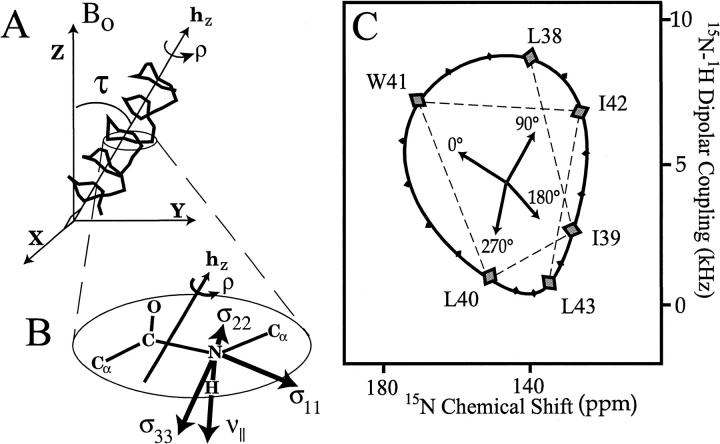Fig. 2.
The PISA wheels can be simulated for a given ideal helical tilt (A) by calculating the 15N-1H dipolar coupling and anisotropic 15N chemical shift as a function of rotational orientation, ρ (B). When a peptide plane is perpendicular to the plane Bohz, ρ is defined as either 0 or 180°. 0° or the "upper" surface is distinguished by a smaller N-H bond orientation with respect to Bo and the bilayer normal. It is shown that for a given position in the PISEMA spectrum it is possible to define the orientation of the laboratory frame of reference (C).

